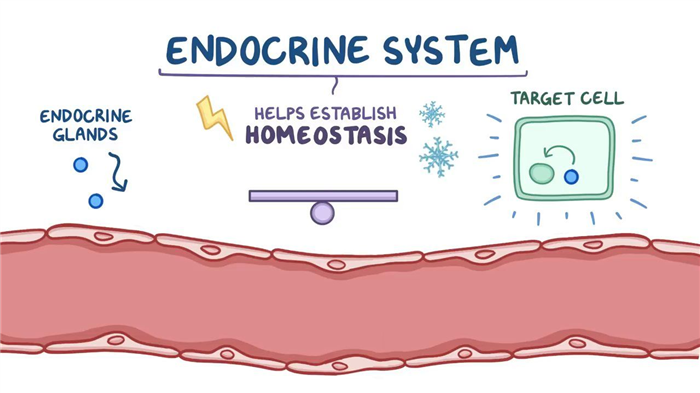Endocrine system anatomy and physiology

The endocrine system is made up of various endocrine glands that each secrete hormones into the bloodstream.
When hormones reach their target cell, they bind to a receptor on the cell’s membrane or within that cell, and in response the target cell changes what it’s doing.
So at the end of the day, the endocrine system helps establish homeostasis – a sense of balance even when there are changes in the external environment.
Now, structurally, hormones can be either steroids or non-steroids.
Steroid hormones are made from cholesterol, and they’re made by the adrenal glands, which sit above each kidney, and the gonads – either the testes or ovaries.
Steroid hormones are hydrophobic or non-polar – meaning that they hate watery environments, so they travel through the bloodstream bound to transport proteins to reach their target cells.
But because steroid hormones are relatively small, and non-polar, they are also able to diffuse right across phospholipid membrane of target cells. Once inside the cell, they bind to a receptor that goes on to activate certain genes in the nucleus.
Non-steroid hormones, on the other hand, are either peptides or proteins – so chains of amino-acids, or they can derive from a single amino acid.
Peptidic hormones, like insulin and glucagon, are hydrophilic – meaning they love coursing through our blood.
However, when they reach the cell membrane of a target cell, they can’t pass through the phospholipid bilayer. Instead, they bind to cell surface receptor proteins.
Once the receptors bind to a non-steroid hormone, they change shape, and that activates various proteins and enzymes that go on to create changes in gene expression within the cell.
So ultimately, once the non-steroid hormone binds to the receptor, there’s a change in the cell even though the hormone never actually enters the cell.
Finally, there are amino-acid hormones that derive from the amino acid, tyrosine, which are the thyroid hormones, as well as adrenaline and noradrenaline – also called epinephrine and norepinephrine. Now, these hormones are synthesized differently, so the molecular tweaks here and there make them behave differently; either more like steroids, or like peptides.